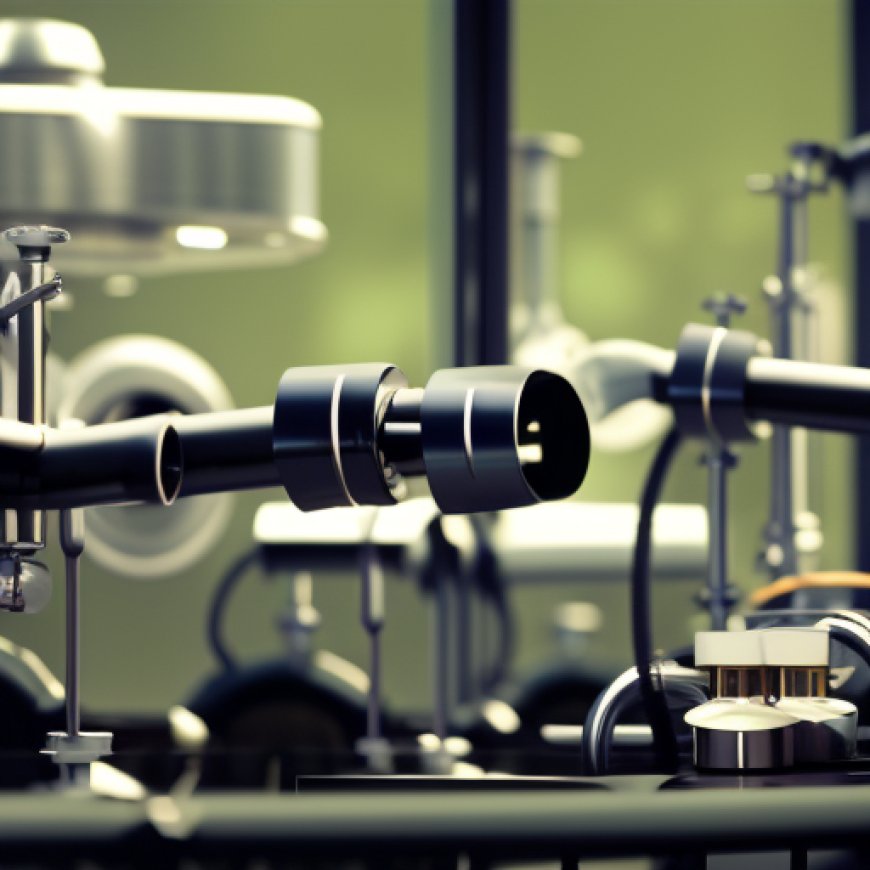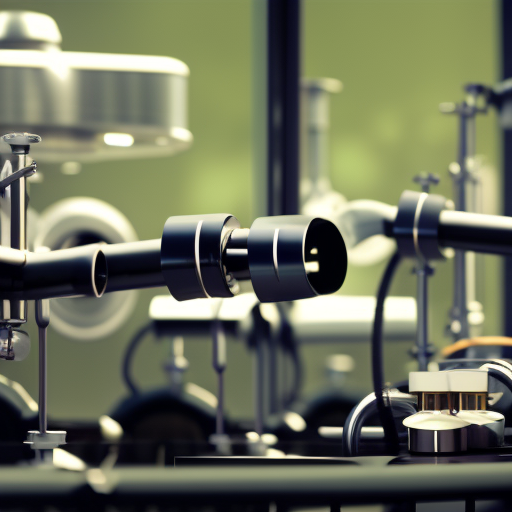Air Products to Provide Oxygen Equipment for One of North America’s Largest Wastewater Treatment Plants in Montreal, Quebec, Canada
Air Products to Provide Oxygen Equipment for One of North ... PR Newswire


The Equipment will be Used at the Facility’s Ozone Generation Site to Remove Viruses, Bacteria and Pharmaceutical Products from Wastewater
LEHIGH VALLEY, Pa., Sept. 7, 2023 /PRNewswire/ — Air Products has been chosen by the city of Montreal to supply oxygen equipment to support an ozone generation site that will remove impurities from wastewater at the Jean-R-Marcotte Wastewater Treatment Plant, one of the largest wastewater treatment plants in North America.
Jean-R.-Marcotte treats almost half of Quebec’s wastewater before releasing it into the St. Lawrence River. On average, the wastewater treatment plant releases 2.3 million cubic meters of water into the river per day.
As part of its agreement with the city of Montreal, Air Products will provide oxygen equipment, including four vacuum swing adsorption (VSA) oxygen plants, to support the city’s new state-of-the-art ozone generation system. The ozone generation system will disinfect the water, removing viruses, bacteria and pharmaceutical products.
“Air Products is proud to collaborate with the city of Montreal on this important project. Air Products’ oxygen generating plants will support the city’s efforts to expand a sustainable water purification process to benefit the citizens of Quebec and the wildlife that depend on the St. Lawrence River,” said Air Products’ Chief Operating Officer, Dr. Samir J. Serhan. “As Air Products celebrates the 50th anniversary of Air Products Canada, this project reflects our continued commitment to Canada.”
Air Products began operations in Canada in 1973. Since then, Air Products has developed well established operations in Alberta, Ontario and Quebec. As Canada’s leading supplier of hydrogen and a leader in the energy transition, Air Products is constructing a $1.6 billion (CAD) net-zero hydrogen energy complex in Edmonton, Alberta. This transformative complex will use an advanced process technology and innovative design to deliver net-zero emissions. The complex also will include a hydrogen-fueled power generation plant and a liquid hydrogen facility that will produce enough liquid hydrogen capacity to fuel every major transit agency in Alberta. Earlier this year, Air Products also announced plans to build Alberta’s first multi-modal hydrogen refueling station near its net-zero hydrogen energy complex in Edmonton.
Air Products pioneered the concept of on-site oxygen production over 75 years ago and today continues to integrate oxygen generation plants into the operations of industrial and municipal users such as glass, nonferrous metals and steel, cement, pulp and paper, water treatment and other industries.
For more information on how Air Products’ industrial gases can aid in wastewater treatment, visit Air Products’ Water and Wastewater website.
About Air Products
Air Products (NYSE:APD) is a world-leading industrial gases company in operation for over 80 years focused on serving energy, environmental, and emerging markets. The Company has two growth pillars driven by sustainability. Air Products’ base business provides essential industrial gases, related equipment and applications expertise to customers in dozens of industries, including refining, chemicals, metals, electronics, manufacturing, and food. The Company also develops, engineers, builds, owns and operates some of the world’s largest industrial gas and carbon-capture projects, supplying world-scale clean hydrogen for global transportation, industrial markets, and the broader energy transition. Additionally, Air Products is the world leader in the supply of liquefied natural gas process technology and equipment, and globally provides turbomachinery, membrane systems and cryogenic containers.
The Company had fiscal 2022 sales of $12.7 billion from operations in over 50 countries and has a current market capitalization of about $65 billion. More than 21,000 passionate, talented and committed employees from diverse backgrounds are driven by Air Products’ higher purpose to create innovative solutions that benefit the environment, enhance sustainability and reimagine what’s possible to address the challenges facing customers, communities, and the world. For more information, visit www.airproducts.com or follow us on LinkedIn, X, Facebook or Instagram.
SOURCE Air Products

SDGs, Targets, and Indicators Analysis
1. Which SDGs are addressed or connected to the issues highlighted in the article?
- SDG 6: Clean Water and Sanitation
- SDG 9: Industry, Innovation, and Infrastructure
- SDG 13: Climate Action
The article discusses the supply of oxygen equipment to support an ozone generation site at a wastewater treatment plant. This is directly related to SDG 6, which aims to ensure availability and sustainable management of water and sanitation for all. Additionally, the article mentions Air Products’ commitment to sustainable water purification processes, which aligns with SDG 9 on promoting sustainable industrialization and fostering innovation. The company’s efforts to reduce emissions and develop clean energy solutions also connect to SDG 13, which focuses on climate action.
2. What specific targets under those SDGs can be identified based on the article’s content?
- SDG 6.3: By 2030, improve water quality by reducing pollution, eliminating dumping, and minimizing release of hazardous chemicals and materials.
- SDG 9.4: By 2030, upgrade infrastructure and retrofit industries to make them sustainable, with increased resource-use efficiency and greater adoption of clean and environmentally sound technologies and industrial processes.
- SDG 13.2: Integrate climate change measures into national policies, strategies, and planning.
The article highlights the use of ozone generation technology to remove impurities from wastewater, including viruses, bacteria, and pharmaceutical products. This aligns with SDG 6.3, which aims to improve water quality by reducing pollution and minimizing the release of hazardous substances. The installation of oxygen equipment and ozone generation systems also supports SDG 9.4, as it involves upgrading infrastructure and adopting clean technologies for sustainable wastewater treatment. Furthermore, Air Products’ commitment to reducing emissions and developing net-zero hydrogen energy complexes contributes to SDG 13.2 by integrating climate change measures into their operations and planning.
3. Are there any indicators mentioned or implied in the article that can be used to measure progress towards the identified targets?
- Indicator 6.3.2: Proportion of bodies of water with good ambient water quality
- Indicator 9.4.1: CO2 emission per unit of value added
- Indicator 13.2.1: Number of countries that have communicated the establishment or operationalization of an integrated policy/strategy/plan which increases their ability to adapt to the adverse impacts of climate change
The article does not explicitly mention specific indicators. However, the use of ozone generation technology to remove impurities from wastewater can be measured by Indicator 6.3.2, which assesses the proportion of bodies of water with good ambient water quality. The commitment to reducing emissions and developing clean energy solutions can be measured by Indicator 9.4.1, which tracks CO2 emissions per unit of value added. Additionally, Air Products’ integration of climate change measures can be measured by Indicator 13.2.1, which evaluates the establishment or operationalization of integrated policies/strategies/plans for climate change adaptation.
SDGs, Targets, and Indicators Table
| SDGs | Targets | Indicators |
|---|---|---|
| SDG 6: Clean Water and Sanitation | 6.3: By 2030, improve water quality by reducing pollution, eliminating dumping, and minimizing release of hazardous chemicals and materials. | 6.3.2: Proportion of bodies of water with good ambient water quality |
| SDG 9: Industry, Innovation, and Infrastructure | 9.4: By 2030, upgrade infrastructure and retrofit industries to make them sustainable, with increased resource-use efficiency and greater adoption of clean and environmentally sound technologies and industrial processes. | 9.4.1: CO2 emission per unit of value added |
| SDG 13: Climate Action | 13.2: Integrate climate change measures into national policies, strategies, and planning. | 13.2.1: Number of countries that have communicated the establishment or operationalization of an integrated policy/strategy/plan which increases their ability to adapt to the adverse impacts of climate change |
Behold! This splendid article springs forth from the wellspring of knowledge, shaped by a wondrous proprietary AI technology that delved into a vast ocean of data, illuminating the path towards the Sustainable Development Goals. Remember that all rights are reserved by SDG Investors LLC, empowering us to champion progress together.
Source: prnewswire.com

Join us, as fellow seekers of change, on a transformative journey at https://sdgtalks.ai/welcome, where you can become a member and actively contribute to shaping a brighter future.







